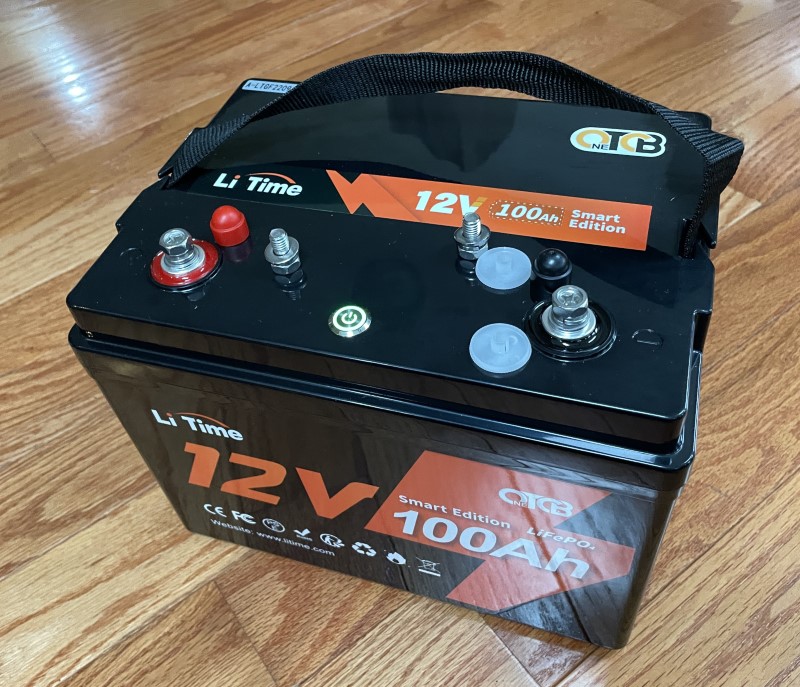
REVIEW – I have many power-hungry gadgets that gobble up power like Santa eats cookies. Keeping them running longer has always been fun! LiTime’s LiFePO4 100Ah battery is a beast that brings a sleighful of juice to my army of electronics!
What is it?
The LiTime 100Ah battery is a 12-volt lithium iron phosphate cell capable of being recharged thousands of times and used for providing power to portable electronics.
Hardware specs
- Weight (pounds) 25 (11.1kg)
- Size (inch) 13*6.82*8.48 (274 x 206.5 x 205mm)
- Volt (V) 12.8
- Capacity(Ah): 100
- Usable Capacity: 100Ah
- Maximum discharge: 300 to 500 Amps for five seconds.
- Depth of Discharge: 100%
- Usable energy (Wh):1280
- Recommended charge current: 20A
- Cycles & Longevity: 10 years
- Internal Impedance: ≤40mΩ
- Low-temperature charging protection: 32°F (0°C)
- Low temperature charging protection recovery: 41°F (5°C)
- Forced low temperature charging as low as 5°F(-15°C)
What’s in the box?
- 100Ah Battery
- Four Terminal bolts
- Two insulating covers
- Two insulating plugs
- Zip-lock storage documentation bag
- Operating guide
- Company brochure
- Products brochure
- Product Manual
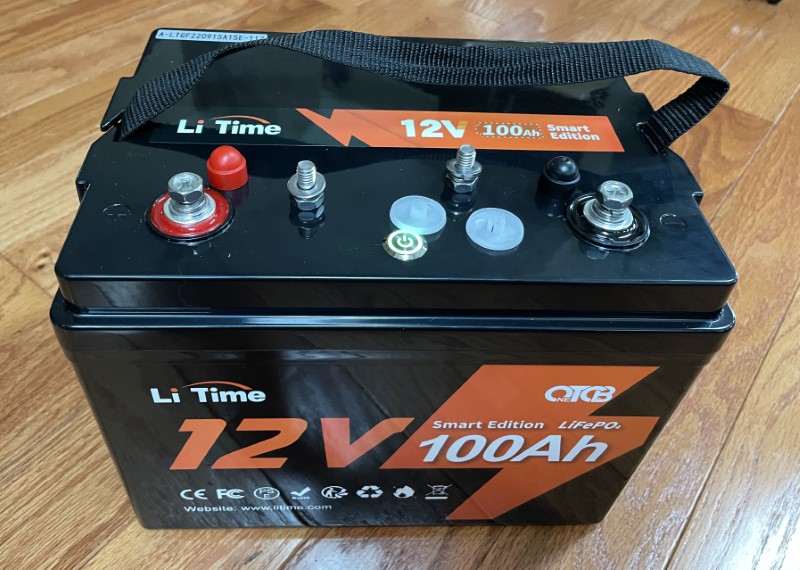
Design and features
LiFePO4 (Lithium Iron Phosphate) batteries are a relatively new technology, having only been around since the ‘90s. Lower internal resistance, more tolerance to complete charge cycles, and higher capacities than traditional cells have made them a strong choice for off-grid. storage, RV power, and solar backup.
battery’s box is sturdy enough to survive Christmas Time shipping.
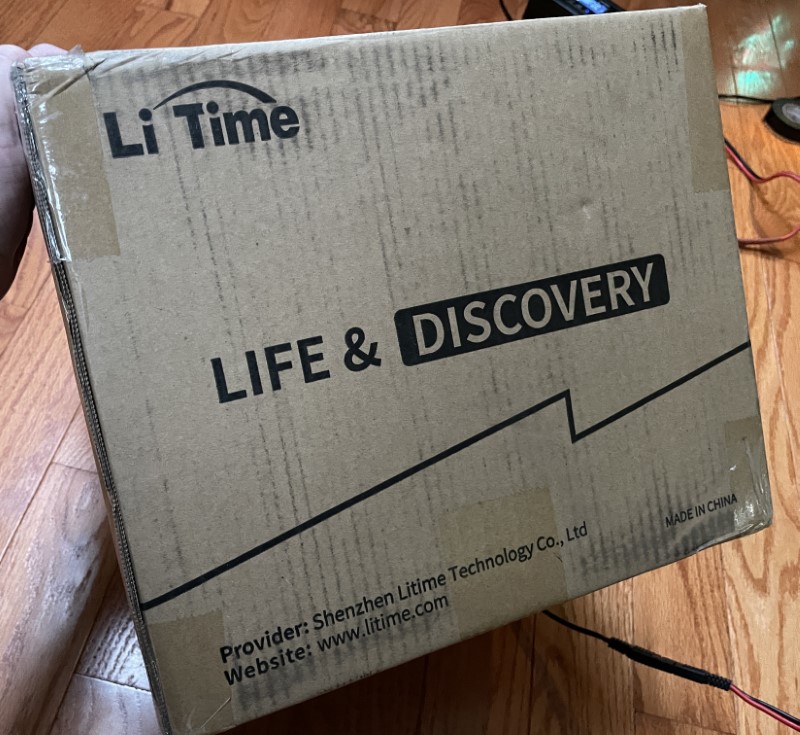
The packaging is good. Foam protects the battery from making contact with the box.
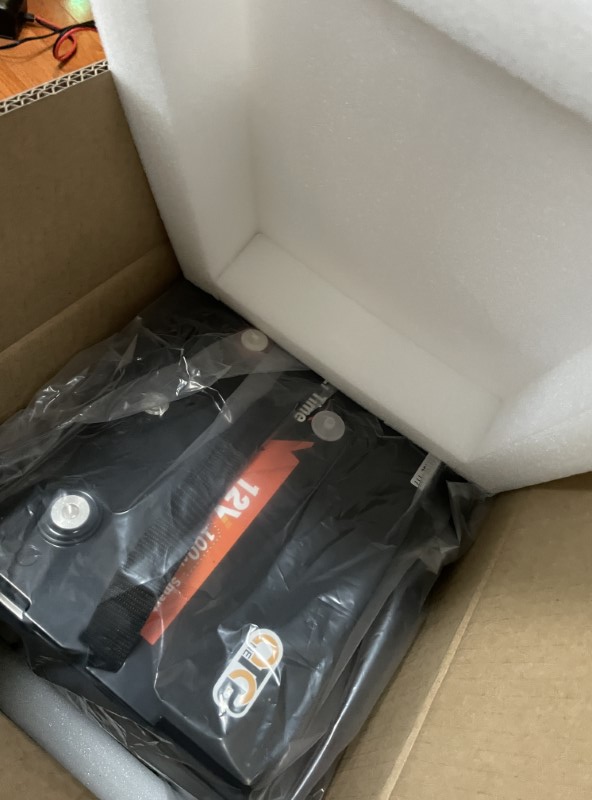
The terminals have caps to prevent any chance of short-circuiting while being transported.
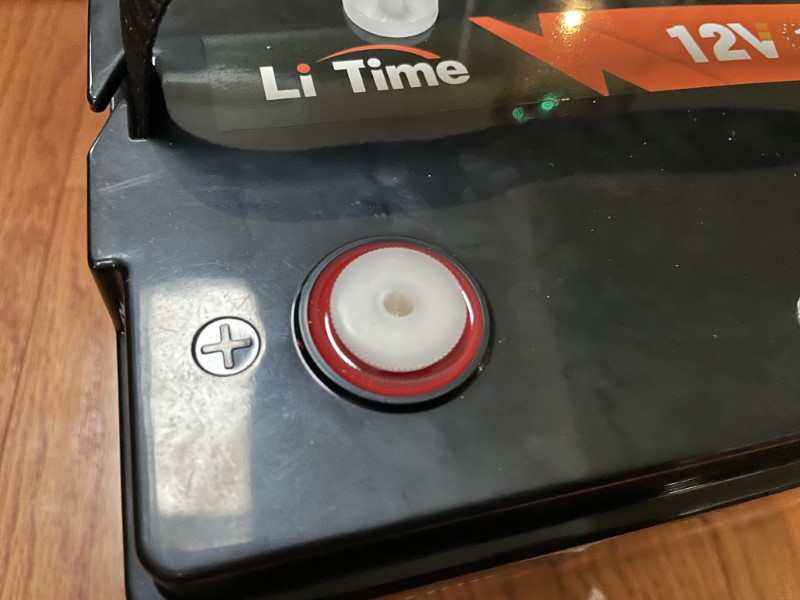
Documentation is in the bag…
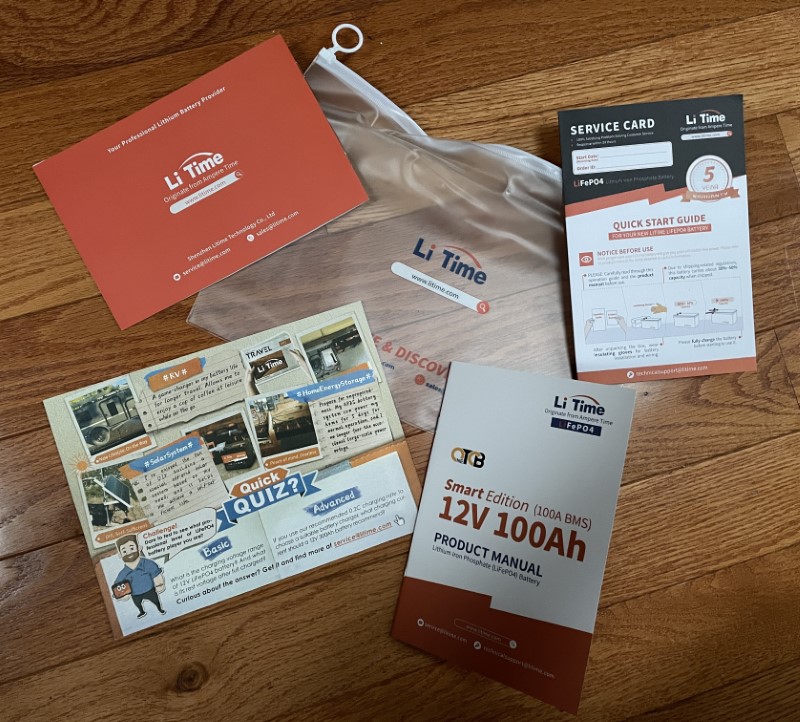
The manual is very well-written, informative, and instructive.
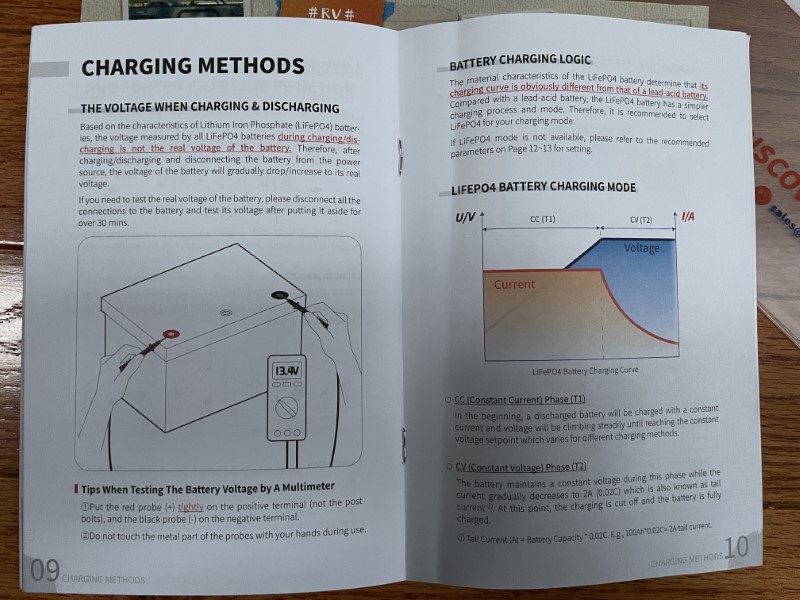
Please use lots of caution when handling batteries. They pack a serious amount of punch.
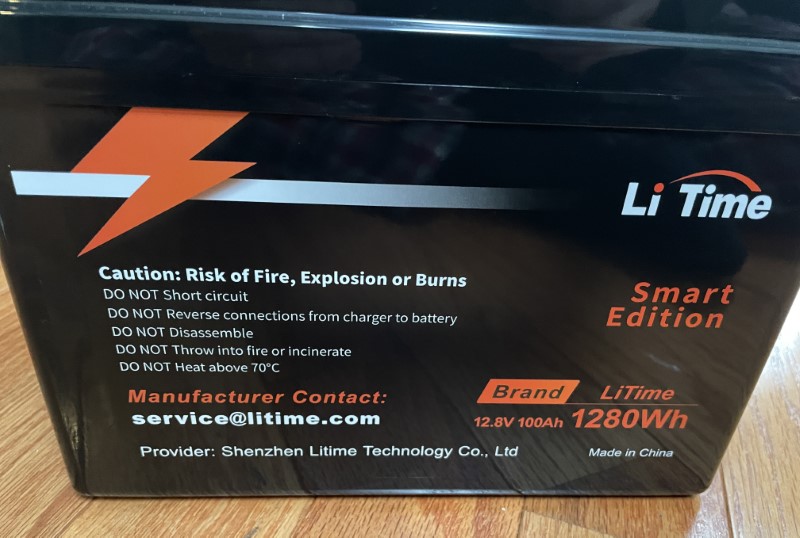
Terminal bolts are provided in a bag on top of the packaging foam. Don’t lose them or mistakenly toss them.
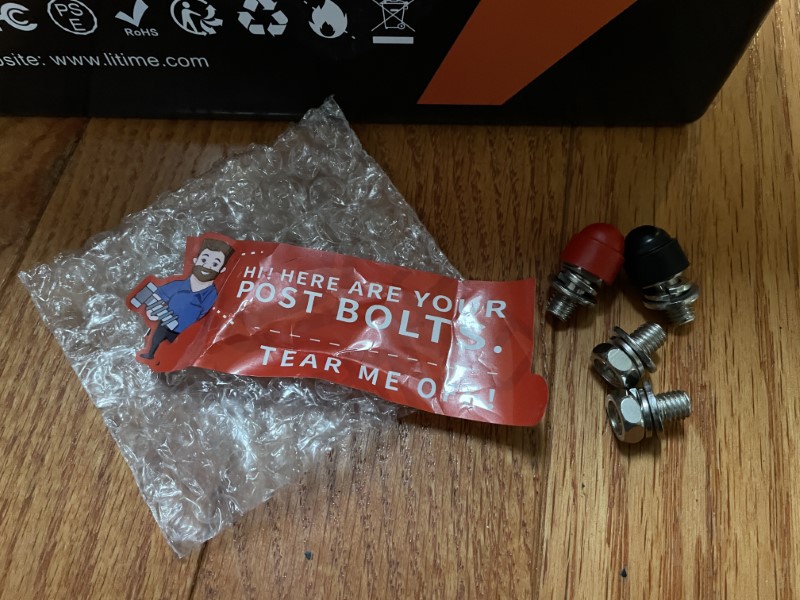
The contact bolt threads are machined well and didn’t bind in the least when tightening them down. LiTime provides two sets.
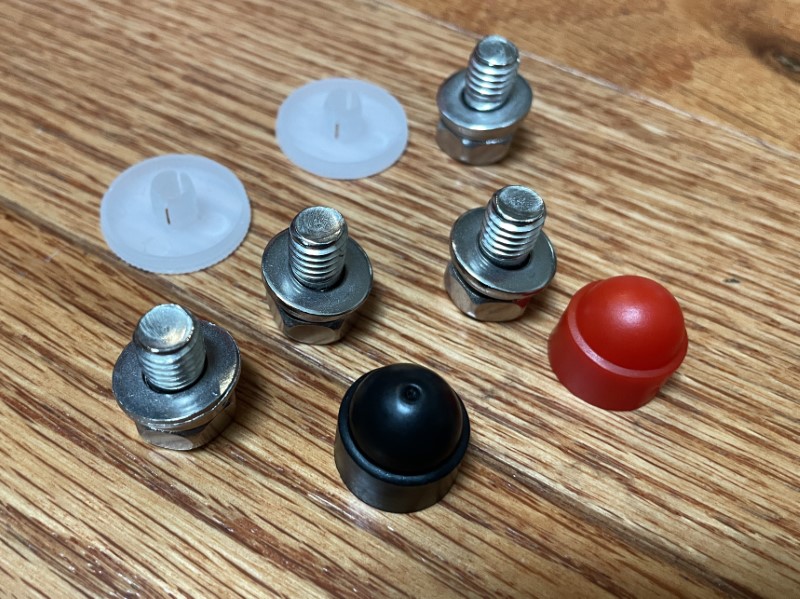
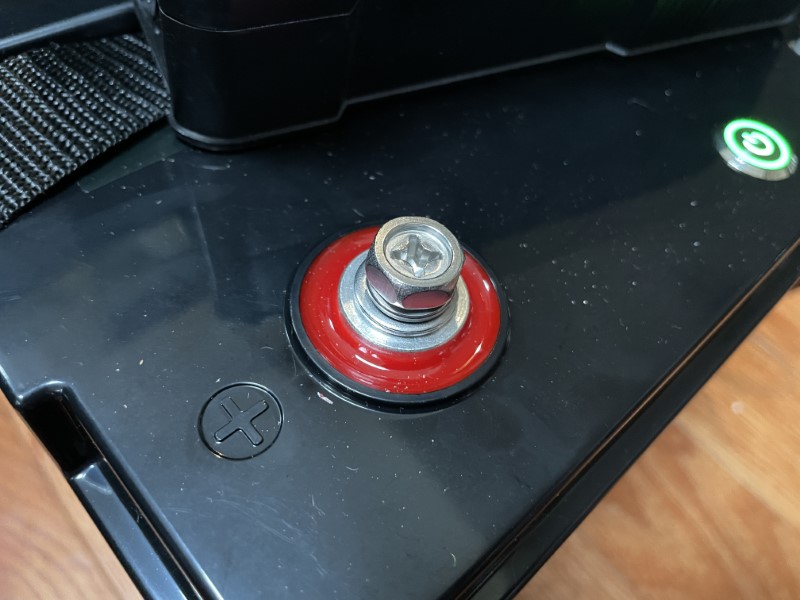
A handy-dandy strap supports the weight of the battery for carrying and installation. This battery weighs in at a touch less than 25 pounds – considerably less than a lead-acid battery of similar size.
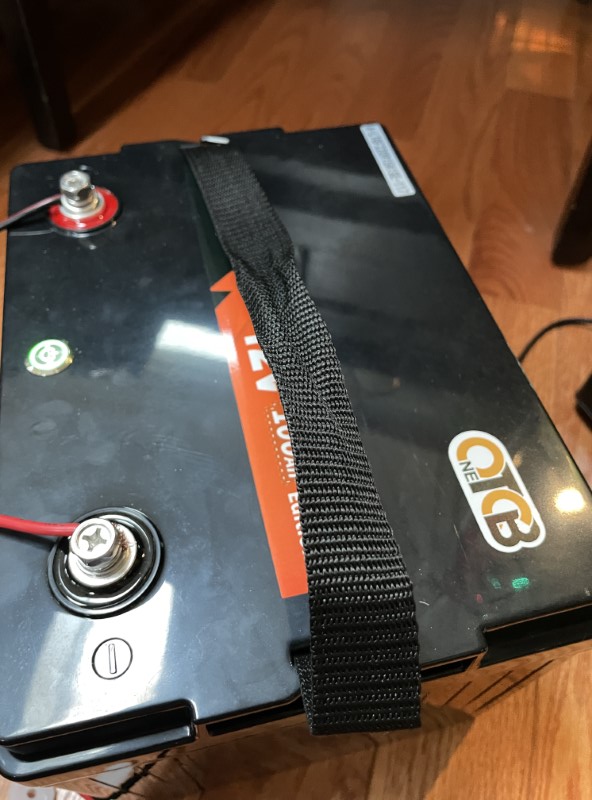
The construction is superb.
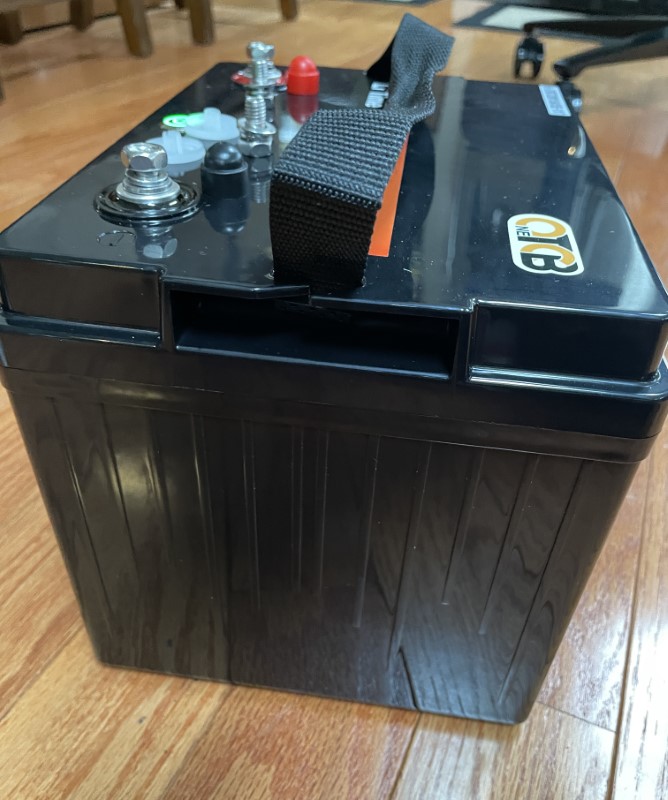
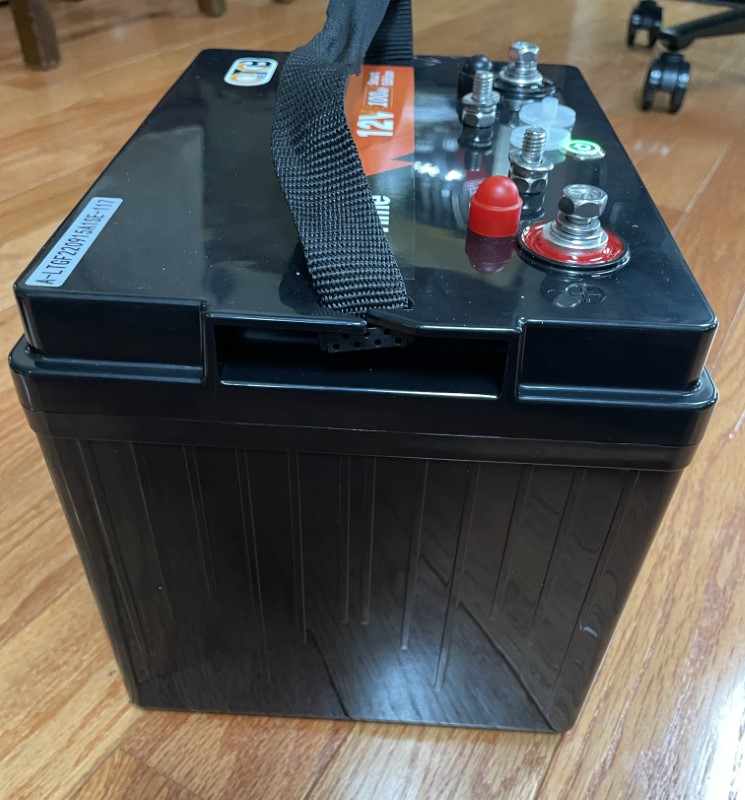
LiTime recommends a charge before the maiden voyage. I used a 10-Amp charger I already own. The battery was partially charged so completion was done in about 4 hours. At my charger’s 10 Amp capacity, from exhausted to full took a little more than 10-1/2 hours. The manual states that a 50 Amp charge will have the battery at full in about two hours.
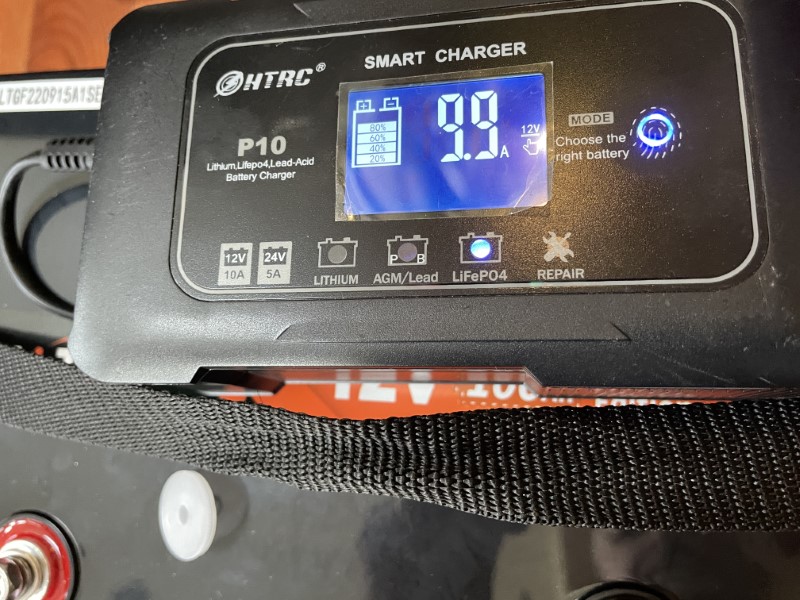
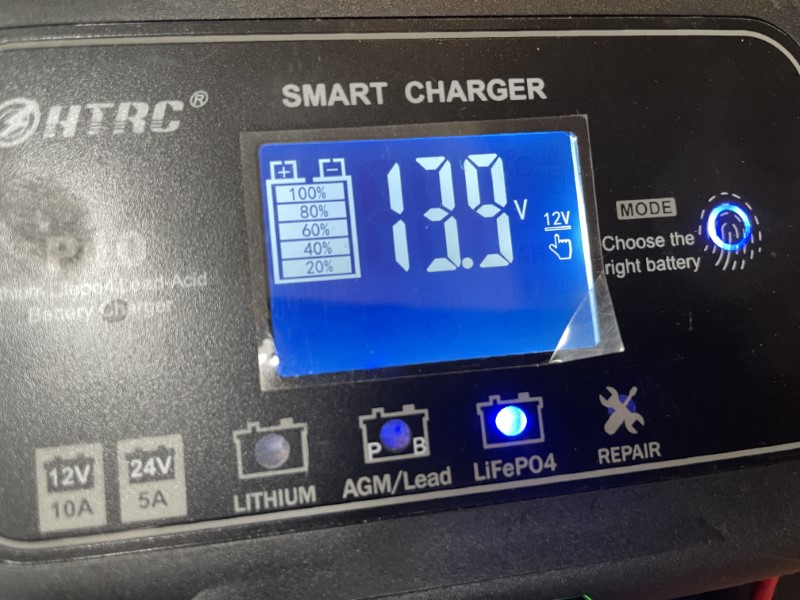
The LiTime has a button on the top that enables the battery and change modes and, unlike other batteries, can turn off the battery completely. The LED in the switch flashes green during power up or if the capacity is low, solid green during normal operation (standby, charging, discharging). A solid red LED indicates the battery has activated the under-voltage protection circuit or is in the middle of the power-down sequence. Flashing red indicates a fault with the battery or BMS (battery management system).
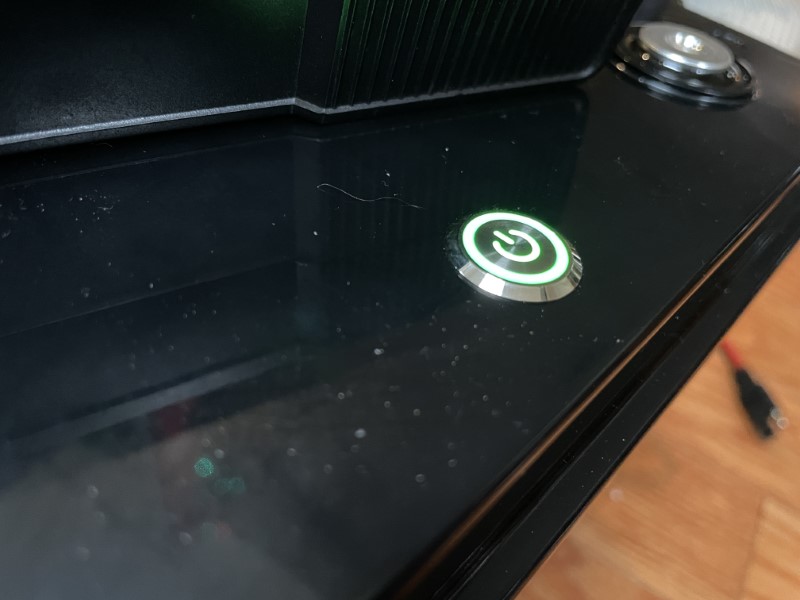
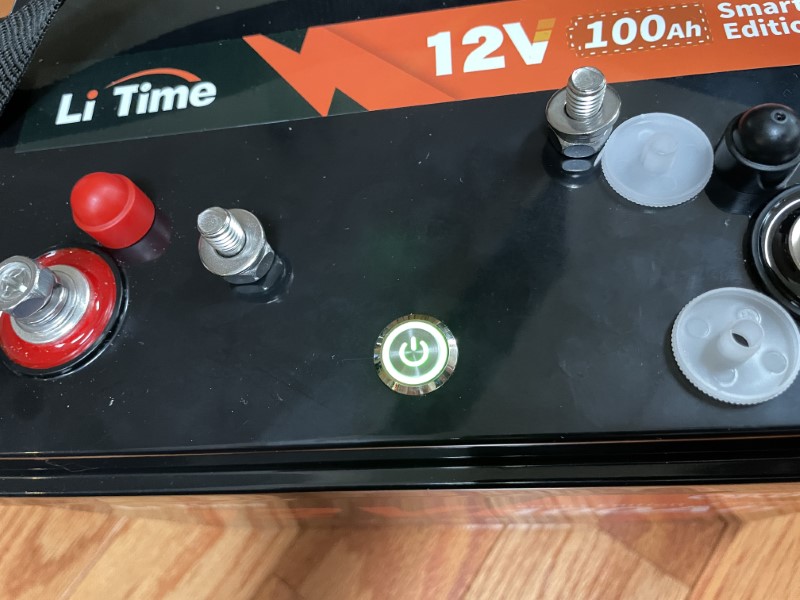
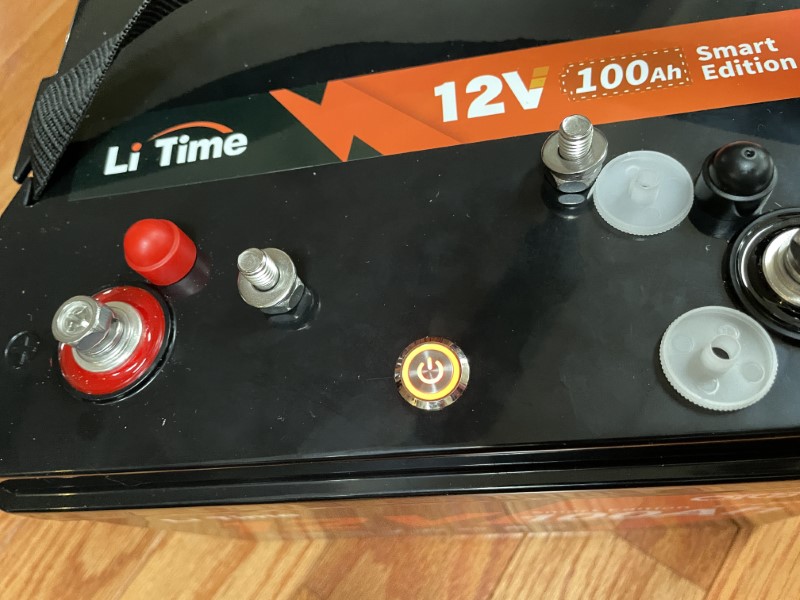
The onboard Battery Management System is excellent. It prevents the battery from charging if the temperature falls below freezing. LiFePO4 batteries can be discharged at temperatures as low as -4°F(-20°C), but it is not recommended to charge them when it’s too cold because it will cause internal lithium plating and permanently reduce the capacity. Should this happen, the LiTime’s switch LED turns orange until the temperature rises high enough to resume charging. Still, in an emergency charging as low as 5°F(-15°C) is possible (though not recommended) by double-pressing the button. For its protection, the battery won’t accept a charge at all if the temperature is below the lower limit (and that’s a good thing).
The nominal voltage was 13.2 volts.
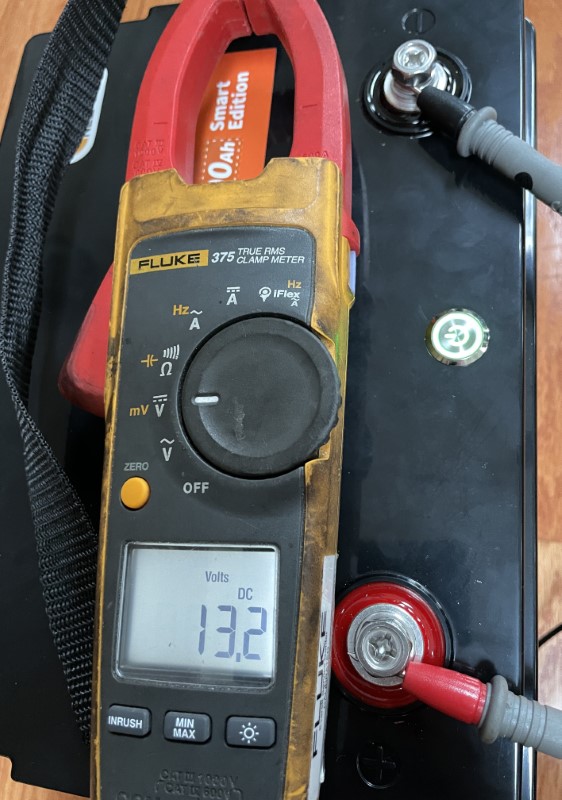
I ran the 100Ah battery through a sequence of tests with some impressive results. Attached to a 400-watt inverter and drawing just under 22 amps, I was able to operate a food dehydrator for over five hours. This means the battery provided about 110 Amp-hours! Bravo, LiTime!
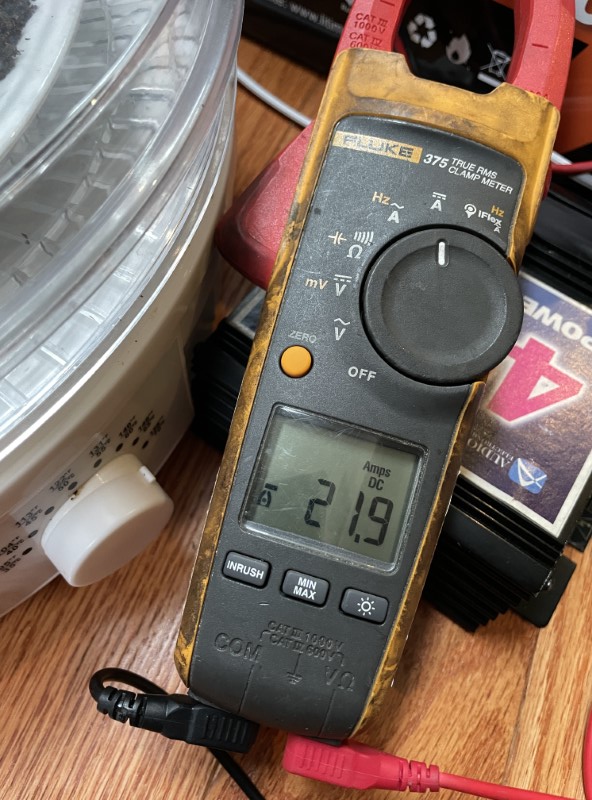
Oh, and before you ask, that’s tea in the dehydrator.
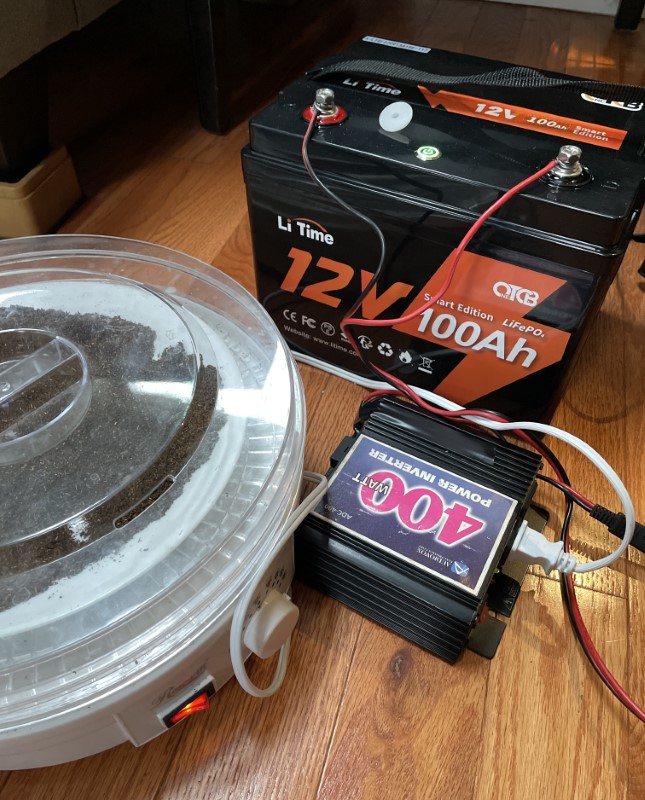
At this rate, a 17-watt LED lightbulb drawing 0.15 amps would last over 600 hours. From their literature, a fully charged LiTime 100Ah battery is capable of charging a 60Wh laptop 21 times, a 90W portable refrigerator for over 14 hours, or a 1150W electric drill for 66 minutes. A 1000W microwave can heat leftovers for an hour and 15 minutes and a 500-watt blender can operate for 2.5 continuous hours – that’s a ton of snow cones (or margaritas if that’s your thing) on a hot summer day. For perspective, I’ve switched from AGM (advanced glass mat) to LiFePO4 in my Ryobi RM480e electric riding lawn mower and more than doubled my usable run time. Now I can vacuum the leaves from my lawn and four of my neighbors before needing to recharge! Fabulous!
As much as I’m tempted to use this battery in my car, LiTime does not recommend using them for engine starting. I would think that the 300 to 500 Amp surge current would be enough for my little l car (I previously measured my starter cranking current during summer temperatures at 130 Amps), but it gets too cold in upstate NY and I don’t want to risk damaging the battery.
I ran the battery through various exercises and it performed MUCH better than another brand of LiFEPO4 batteries I have. Build quality is outstanding, capacity is impressive, and the battery management system works flawlessly.
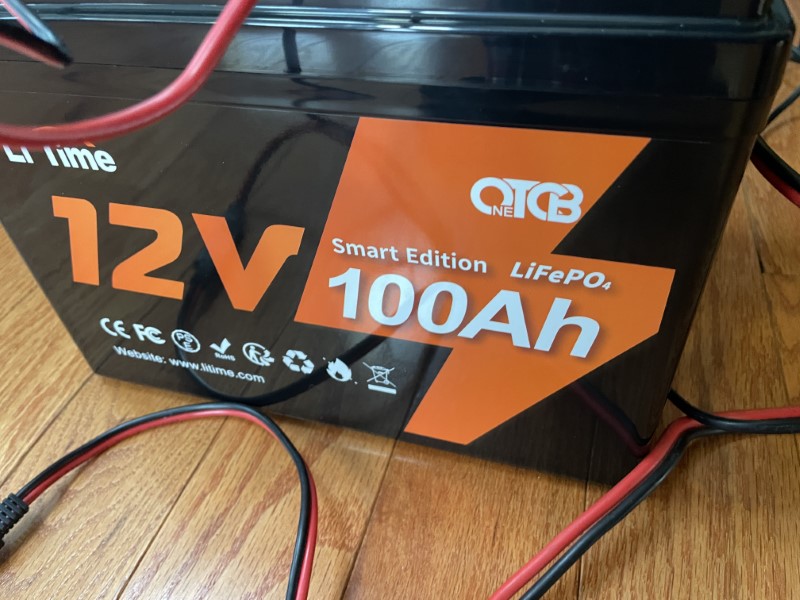
What I like
- The built-in battery management system is top-notch
- A ton of usable capacity!
- Rechargeable up to 4000 times
- The ability to turn the battery off when not using is great!
- Much lighter weight than a lead-acid or AGM battery
What I would change
- Nothing
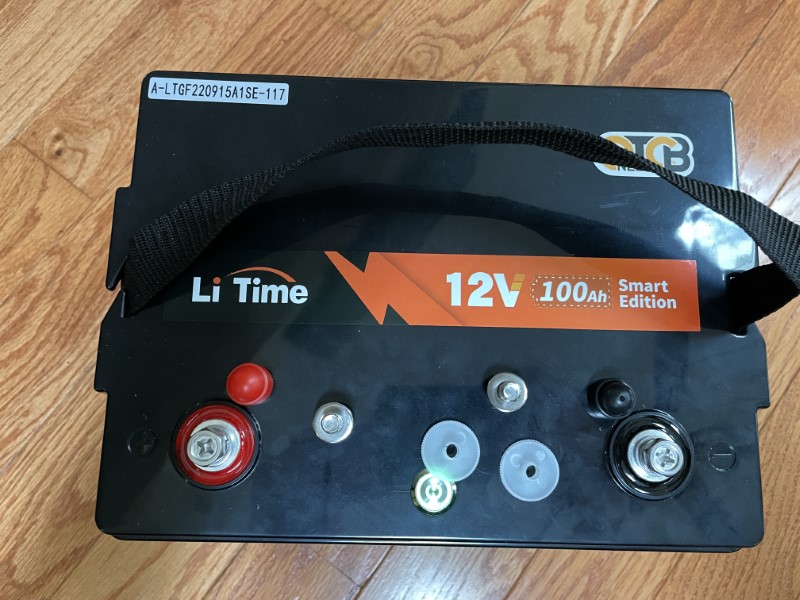
Final thoughts
Are they more expensive than conventional lead-acid batteries? It depends on how you look at it – The LiTime batteries have more usable capacity, can be charged up to 4000 times (far more than about 700 full charges for an AGM), and should last about 10 years (vs. three to five for AGM). Their higher up-front cost should be easily recovered over the lifespan of the battery. The Ampere Time 100aH battery’s built-in management system, capacity, and utility are a solid choice for power, provided your charging needs keep it above freezing. Wonderful! Thanks, Ampere Time!
Price: $489.99
Where to buy: LiTime (save 3% with code: thegadgeteer ) and also available on Amazon
Source: The sample for this review was supplied by LiTime.



Gadgeteer Comment Policy - Please read before commenting
Nice review Dave. How do you connect devices to the battery? Did you make a DIY or does Ampere Time provide connectors to plug stuff into?
Lex, I used connectors I had lurking about in various parts bins. Ampere Time does not provide them.
Amperetime in there literature recommend using a dc-dc converter
When charging from a generator or car alternator , however , they do NOT recommend a viable converter to support or backup their statement.
A recommendation on a dutiable converter would be appropriate on their behalf .
Oalf, Ampere Time does a commendable job with battery specs and charging requirements in the manual, but there are as many brands of chargers as there are batteries. Since they didn’t recommend a charger, I made sure the one I used fell within their recommendations.
Stackable Integrated Battery’s most popular products in Europe in 2023
https://www.essvalley.com
Hi. Did you test the low temperature protection? Another YouTuber did and it didn’t work. After tearing down the battery, which is very sturdy according to him, there was only a hot temperature sensor, not a cold one. Many Thanks
Great review, I recently purchased 2 Vatrer 12V 100Ah batteries for trolling motors and the lithium batteries are truly amazing and save on maintenance.